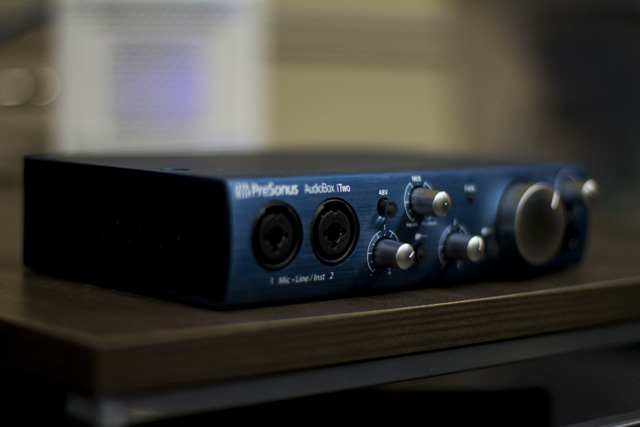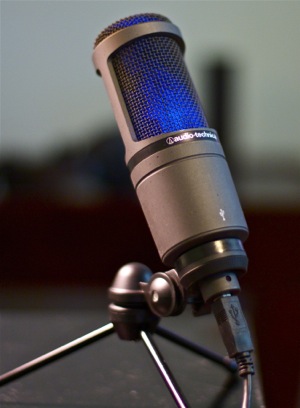Recently I obtained a Kemper Profiling Amp as I won’t be able to crank my amps as loud as I have been in my new working space. I really wanted to see if I could get the same tone that I have been getting on all of my lessons with this new box but I have been skeptical and figured I would give it a shot. I bought one used so if I didn’t like it, I would be able to get my money back.
The amp I really like to use for all of my lessons is the Andrews Spectraverb. This is an extremely versatile and amazing sounding Fender Blackface style amp made by Jeff Andrews who has a shop just a few miles down from the house where I live. It’s my go to for almost everything these days, but I still really like my 66 Vibrolux and 79 Twin as well. I just don’t have enough room to keep them set up so I just use the Andrews and I’m happy. The other amps I have are great don’t get me wrong but just don’t seem as versatile to me though.
When I received the Kemper, the first order of business was to learn how to profile an amp then go about making the best profiles I can of the amps I own as those are the amps that I really like using. I also know these amps very well and understand how to push them to get different tones.
So when I finally learned the process and created some profiles, I was shocked to hear how great they sounded. I mean I have used digital modelers in the past and have enjoyed using them, but the amps that I own have always sounded a million times better to me, until now.
In my opinion, the Kemper doesn’t replace my amps, but is like a box that can store snaphshots of all of them and ones I don’t have. Profiles are not that hard to create but there are many factors that contribute to the final tone you will get while creating them. The mic you use, the mic position, the pre amp, and your ability to capture the sound of the amp will heavily determine the quality of the profile. If you don’t know your gear, then your profiles won’t turn out very well in my opinion. They will be usable but it takes some trial and error to figure out how to best get them in my opinion.
Gear Used for Profiles
To create all of the profiles I have done so far, I used the following gear.
BLA modded 002rack
Api A2D Preamp
AEA R84 Ribbon Microphone
Fender Relic Strat
The Profiles were exported in 24 bit 48khz and then uploaded to Soundcloud.
I have created a number of these profiles and when you start to understand how much the mic position determines the final tone, then you can create numerous profiles of the same amp but using different micing techniques. Since this is the case, I wouldn’t want to sell any of my amps as I would want to be able to create new profiles in the future as well.
Once you have made the profile of your amp, you will then have full control over the Gain, Bass, Mid, Treble, Presence, and Volume controls on the Kemper. This is really great and will give you a lot of options to re shape the profile created. I have learned however that these controls do not act like the ones on my amps. They are more like an EQ you would find in any DAW for recording. Having said that, they are really useful if you understand what you are doing with them.
Okay enough with the talk. I’m sure you just want to hear it already!!
The real test as everyone knows comes in how the Kemper actually sounds. So without further ado, here’s the answer.
Track 1 – Kemper
High Res 24/48khz
Soundcloud mp3
Track 2 – Andrews Spectraverb
High Res 24/48khz
Soundcloud mp3
Post a comment below for your choice of which track is what. Kemper or Andrews
I will reveal which track is which this Friday February 19th.
I will say that there is a slight difference in the Kemper and the Real amp but I would say that the Kemper gets about 98% there. It’s only my opinion and some may not like the Kemper at all. After using the Kemper for about a week though, I have to say it is an amazing piece of gear. For the record, I’ve been using tube amps exclusively for nearly 25 years now so I have heard a lot of them. From this point on all of the lessons will be done with the Kemper.
Post your guess and/ or comment below.
Here’s a few clips of the Kemper with my Vibrolux Profile





I think I know which one is which. But HEAR is the thing. I’ve not played the kemper so I can’t say for sure but I have an AXE FX. it is wicked cool for sure. But every single modeler I have ever played always sounds like a recording of the amp. The Axe Fx happens to sound like a really excellent recording and it also cleans up really nicely with the volume knob on the guitar, No doubt it is cool and I love it for recording but there is no way I would ever ever mistake it for my real amp. I think it’s referred to as the “in room Experience” it’s hard to put your finger on but my ear has no problem. The Axe Fx does the profileing thing as well. I have a SM57 I used to create profiles of my Clark Lil’ bit, Swart AST Pro, and my favorite which is a Tone King Metropolitan. Like you said, I can get really close, most people would have a hard time choosing between the recordings. But side by side from amp to ears I can easily pick it everytime. I what a “Captain and Rob Chappers” review of the Kemper and while impressive Chappers was able to identify the real amp everytime. For me, the advantage of the modelers for recording is obvious. Plus with the Axe FX ii I get some excellent effects as well as a guy who is constantly working working to improve it and make the improvements available to all that own the hardware. I also have an eleven rack and it’s pretty much the same story. The eleven rack is capable of excellent real tube amp sounds and great effects But I think the Axe FX has MORE of them but at 250 -350 for a Eleven Rack it’s really hard to justify the extra cost of the Axe- FX. Owning both I can honestly say if I were on a limited budget the 11 rack is an absolute no brainer. I am certain that there is a science to creating profiles of amps. Like I said I get close but at the end of the day side by side there really is no comparison to me. Do you find the same to be true with the kemper?
Hi Joe,
The Kemper is almost dead on to the amp. If I don’t mark which files were which I wouldn’t be able to tell. What is your guess?
test 2 was the amp John ?!
Hi John, My guess would be that track 1 is the amp and track 2 is the Kemper. Sounds really nice though. I like the brightness.
Hi John,
The first recording sounds hotter with more reverb than the second recording. I think the second recording sounds more warm through the bass and treble spectrums with less reverb. I’m guessing the second in the fender clone.
Sounds amazing whichever one is the Kemper! I would guess track 2
Hope you’re doing well John – I remember the old days when we did a pioneering Skype lesson – I believe one of your first ones if not the first – back when you were a young-un!
regards,
Jeff
I thought that was you. That was the first one I ever did and that has been more than 8 years ago. Man time flies!
I can certainly tell a difference between the two tracks – Track 1 seems a bit brighter and Track 2 is warmer by my ear. I am not familiar with the tone of your Spectraverb, but I would guess that the amp is Track 2…
I think track 2 is the amp and track 1 is the profiler. They are very close to one another though.
My guess would be that track #1 is the tube amp and track #2 is Kemper.
Sound so close it’s really just a hunch but track 2 has more of that “zipper” sound as the notes bloom.
Both sound really good but something makes me think the Kemper is #1, Amp is #2.
Great sounding amp John. I think #2 is the Kempler.
Both sound decent, but I think the Kemper is #2
It is hard to tell but I believe the tube amp is track # 1 and the Kemper is track# 2. I love tube amps and that is the sound I’m picking up from track# 1…. I hope !!!!!
Hi I vote for track 1 as the Kemper
guessing # 2 is the tube, somehow sounds a little richer.. course computer speakers probably affect the sound
just watched an interesting youtube on this subject.. comments on how much work goes into designing an amp then having people ordering them and returning them probably after modeling them when they don’t plan to pay for or keep the amp from the beginning. of course very different story than what John is saying, owning the amps to begin with and wanting to keep them but be able to “use” them in a certain setting
https://www.youtube.com/watch?v=rkf4kXVkZek
HI!
to me 1 is richer fuller, fatter!
2 is thinner……….I guess 1 is tube/2 is Kemper!!!!!
Good luck in your new diggs!!!!!!!!!
1 Amp, 2 Kemper.
Surprisingly close though!
Hi,
Track 1 must be the kemper. Track 2 sounds a little bit more natural.
I use the Kemper too and my most favourite Profiles are from B. Meulendyk (!), M. Britt and Tonehawk.
But: There is a software amp that will blow you away: Scuffham Amps
Try it! No other amp-sim or the Kemper has kept me playing more and more creative, just tweaking the 5 basic amps a little bit. No other amp-sim (exept the Kemper) reacts closer to the response of an amp. And it is easier for recording.
I think the amp is track 1. But I have never heard your amp so I am just guessing. My real question is would you John be able to tell the difference live in the same room, Not a recording. But live sound. I think the modelers today can get fantastic tones. I think the kemper has the profiling down to the 98%-99% tone of a recorded amp So why bother with tube amps any more? The answer for me is there is a difference between a live amp and a recorded amp. I don’t know what it is but I can almost instantly tell the difference between live and recording. So live John can you tell the difference?
Well I’m not going to use it for live stuff. This is only for recording. The amp sims don’t sound good to me for recording so I don’t use them. The amp sounds better when you’re in the room with it, that’s part of what an amp is but I’m only looking for recording tones that are as good as what I currently create with these amps. I make a living recording my videos and I don’t play live anymore so that is what I’m trying to accomplish.
sounds like #1 is tube amp..i can hear a little hum from time to time
I know the first track was the kemper and the second was the amp
To be honest I can’t tell which is which…but there is slightly more of a bass tone to the second recording.
But as to which is the kemper or the amp I couldn’t say.
Welcome to the club!!!
Dude, from just what I read in your blog….as soon as you got it , you started profiling. Yes, that is a amazing feature, but…wait til you dig into the “little lunch box of love” (lol…i just made that up!) You are in for some treats, my friend!!! Im excited for you, it will be one of the best purchases you ever made. It was for me!! I love mine!!
I have the non-powered rack mount version w/ a Tech21 power amp 60, and the FCB1010.
Thanks James! It really is cool. Checking out some plexi profiles right now.
I’m hoping the second one is the profiler……because it just sounds bad
You think? Not to me
My guess: track 1 tube.
Hi John – really too close to call – but would put the Kemper as #2. I use a system built into RAT Valve electronic amps here in the UK called ” Power Scaling ” which is where you run the valve amp flat out ( on master vol ) and use the power scaling to bring the volume level to where you want it – e.g at home -in studio or live gig etc. It is based on running BOTH preamp AND Power amp valves at maximum at all times. It works really well and I have a couple of these hand converted amps custom built. Currently using a 22 watt conversion of a Fender Blues Jr which is unbelievably loud and with beautiful even tone at almost any volume level.
Hope the Kemper is a keeper for you.
Regards
I think, Kemper is track #2.
Kemper is Number 2. Sounds more refined. I could be wrong. Just what I hear.
Wow. I am amazed that the Kemper amp sounds so good! I may have to get one, too.
Like Rolly99, I too have discovered the Scuffham S-Gear 2 VST amp, and am totally blown away by it. For those unfamiliar with it, it’s actually designed as an effect. What this means is that when you’re recording, you hear yourself playing through the amp, but your audio file is totally clean, straight off the guitar. This allows you to change the amp and any settings after the fact.
John,
It occurs to me you could tweak the Kemper to be a slightly less trebly and slightly fuller, and get the two sounds even closer, if you wanted.
Yes you can. These files have not been processed any. I usually add a lot of processing to the final guitar tone including EQ, Compression, and Delay. You hear this on every track I’ve produced for many years now.